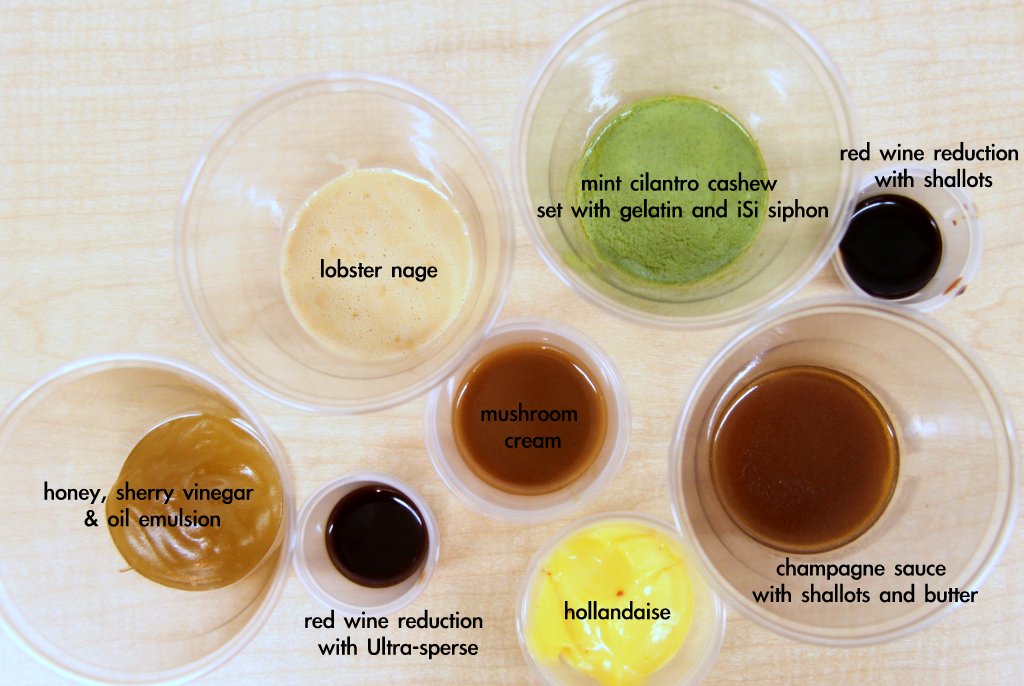Josiah Citrin on Viscosity in French Sauces
Josiah Citrin visited class to discuss viscosity’s role in sauces and its effect on flavor and mouthfeel. Josiah is the chef/owner of Mélisse in Santa Monica and co-owner of Lemon Moon in West LA. 
Using the sauces that he brought for us to taste, Josiah traced out the evolution of sauce making from pre-1970s to present day. Traditional French sauces are sually thickened with a mixture of cooked butter and flour (roux). Consequently, they were thick and heavy on the palate. Then, in the 1970s, a shift towards more delicate preparations and sophisticated presentation took place. This nouvelle cuisine caused cooks to prepare sauces with less flour, relying more upon high quality butter, vinegar, and other less viscous liquids. In the 1990s and 2000s, the introduction into restaurant kitchens of techniques and ingredients previously only found in industrial food preparation saw the use of Ultratex 3, tapioca starch, xanthan gum, and other additives in sauce making.
A taste test of red wine sauce made 3 ways made this evolution particularly clear to us:
i. thickened with flour
ii. thickened with puréed shallots and butter
iii. thickened with Ultratex 3 (a tapioca-derived starch)
While the viscosities of the sauces were similar, the taste differences were quite striking. Each additive has its particular taste, and heat also creates new flavor molecules out of the base recipe.
A few of Josiah’s tips for sauce-making:
1) When making hollandaise, add salt at the beginning of preparation, before adding butter.
Why? Salt (NaCl) and water are both polar molecules, which means one part of the molecule is negatively charged while the other part is positively charged. Generally, like dissolves like, and water does dissolve salt very well. However, fat is nonpolar, and salt does not dissolve well in it. Thus, to make evenly salted hollandaise, make sure to salt while the sauce is still mostly water.
2) To make a very light and airy sauce, such as the mint cilantro cashew sauce, set with gelatin and foam with an iSi siphon.
Why? The iSi siphon produces a temporary foam consisting of air bubbles entrapped in a network of sauce molecules. However, the bubbles are unstable and will merge, causing the foam to quickly deflate. Introducing gelatin to the sauce, however, strengthens the network and extends the lifetime of the foam.
3) Need to keep sauces warm? Store them in thermoses instead of in open containers in water baths.
Why? Sauces stored in open containers will evaporate, and the flavor and mouthfeel will change due to the reduction of volume. Capped thermoses are perfect at trapping heat and also preventing evaporation.

